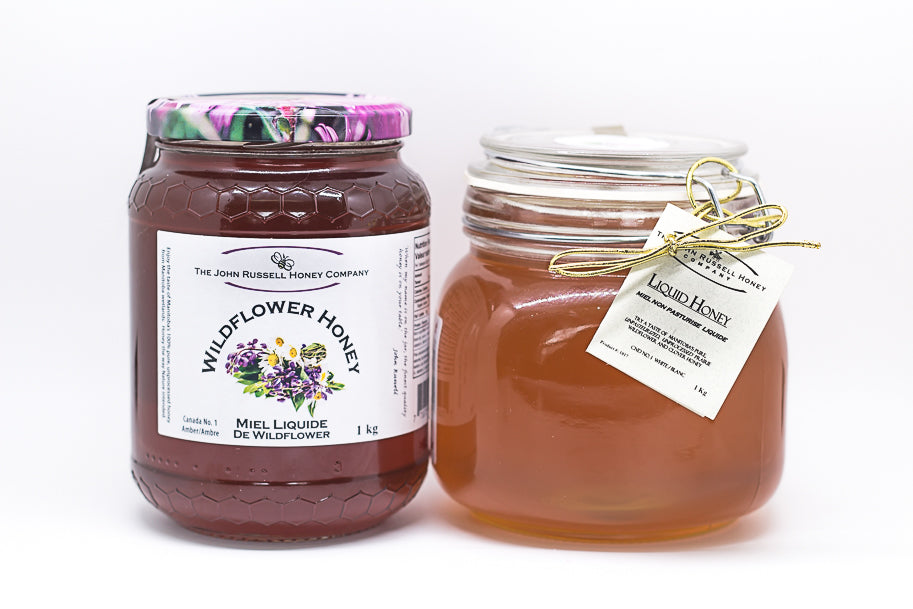Honey is a combination of naturally occurring sugars found in the nectar secretions of flowering plants, trees and shrubs. Upon ingestion, the nectars are mixed with enzymes found in the honeybees which isolates the nectar into a series of simple sugars. The honey is then stored in impermeable wax cells in the hive and the water content of the nectar is reduced through air convection evaporation. At 17% moisture content, the bees then cover the cell with a wax cover, encapsulating the honey and protecting the honey until it is needed by the bees or harvested by the beekeeper.
Honey is hydroscopic, meaning that it will pull water from out of the surrounding air. If honey’s moisture content goes above 18%, its molecular density is reduced to the point where yeasts can multiply in it, and fermentation can result.
If honey is kept in a tightly sealed container, it has no expiry time frame. There has been honey pulled out of Egyptian tombs that has been thousands of years old, still as edible as the day it was put in.
All honey will crystallize eventually!
This is actually an indicator of its purity and quality as much off-shore honey is diluted with glucose and corn syrup to inflate profits. Crystallization is a natural process, and does not change the quality or taste of the honey although the texture and mouth-feel will be different. Creamed honey is actually crystallized honey that has been beaten smooth to achieve butter like texture. Honey of any kind should not be refrigerated. Creamed honey will be rock hard when placed in the fridge, and difficult to spread. Liquid honey will crystallize faster in cool temperatures.
- Keep creamed honey at room temperature and below 25 degrees Celsius.
- Keep liquid honey at room temperature and below 40 degrees Celsius.
If your liquid honey begins to crystallize, place in a warm spot like a windowsill, or a shelf above your stove to slow the process. It can also be placed in an oven, at 100 degrees Celsius or into the microwave for one minute sessions with the lid removed until clarification occurs. Overheating will cause the natural sugars to caramelize changing the colour and flavour of the honey.
PLEASE BE CAREFUL!
Honey can reach hotter temperatures above boiling water and extreme care should be used when heating it. Protective wear should be used.

